ron-t kayaking blog
5/6 October 2013 ............ Menai Straits and the Swellies
The Springs over the weekend meant I could go to the Swellies to see how the boat would behave with its new stern.
On the Saturday, it was a really nice afternoon, so I got on the water a good hour early and paddled up through the Swellies and out beyond Brittania Bridge.
Here is the view from the slipway in Menai Bridge looking eastwards - you can just make out Bangor pier.
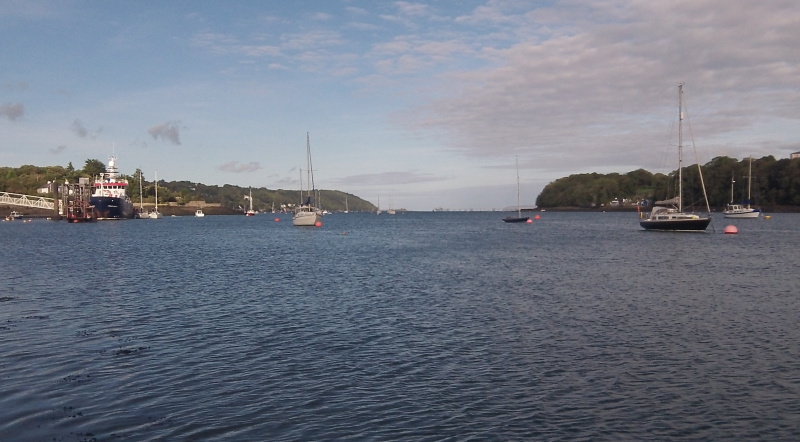
On the left of the picture you can see the Prince Madog - it is a maritime research ship run by Bangor University, and that is where it berths when it is not out at sea. This was the first time it has been there since I started playing in the Swellies.
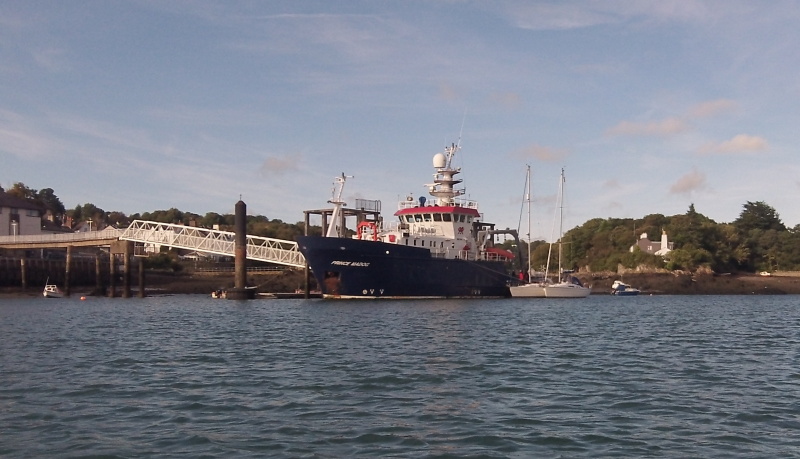
This is looking back at the Menai Bridge from the middle of the Swellies. It is very narrow, there is a stone pillar between the two sides of the road at the bottom of each tower - it is scary enough driving through them in a car - how the busses get through them I have no idea, but you see them going very very slowly.
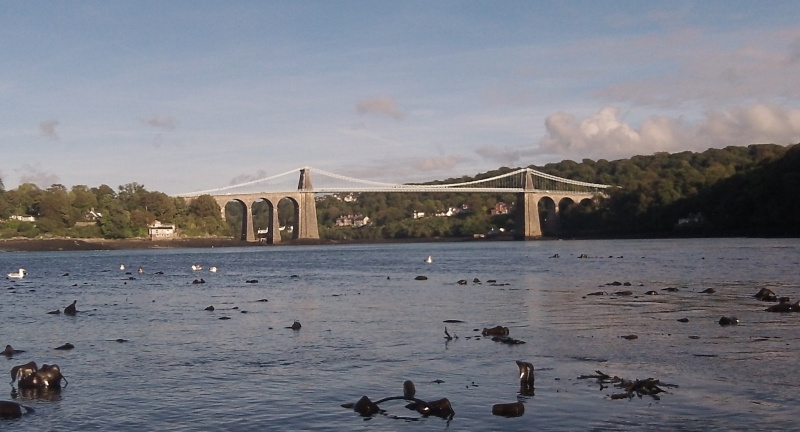
Just approaching and looking up at Britannia Bridge.
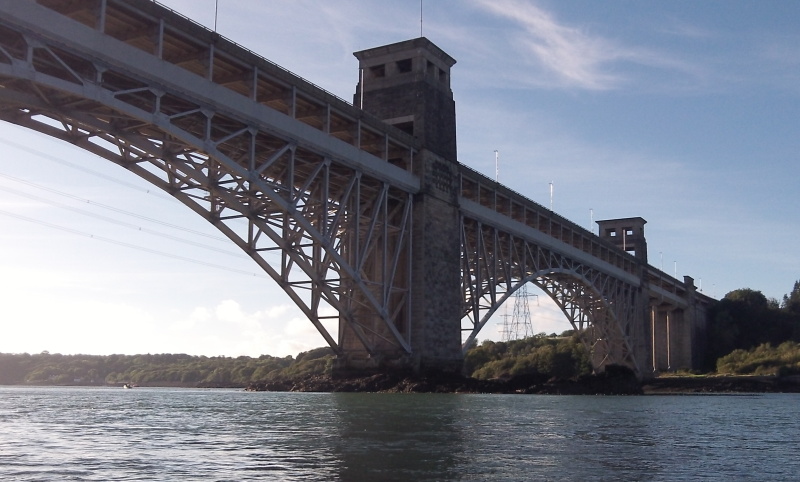
Britannia Bridge was originally buit as a box section bridge - the longest box section bridge ever built without additional suspension. The railway ran through the box section.
The box section was lined with wood, and in 1970 some youngsters set fire to the wood, it spread right through the box section and wrecked the bridge. I can remember reading about it in the press.
The bridge was rebuilt as an arch bridge, with the railway running across the top of the arch.
A few years later an upper deck was added to carry the A55 dual carriageway, except that the bridge is too narrow for a dual carriageway, it is only single carriageway, and it causes lots of traffic jams.
There are now calls for a third bridge across the Menai Straits.
Here it is in its present form from further out in the Menai Strait.
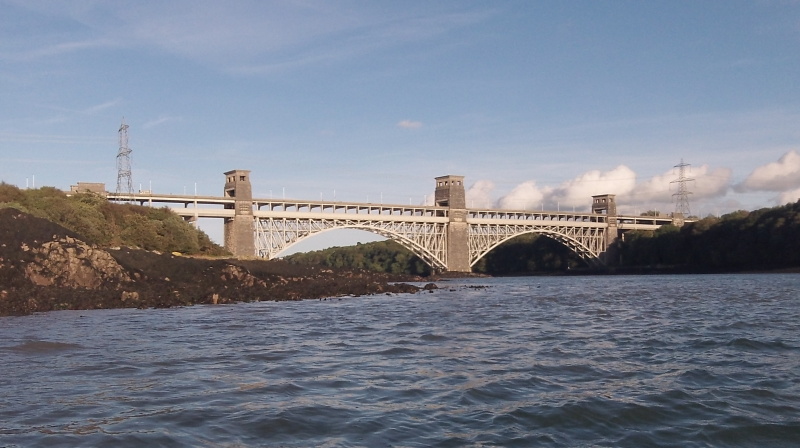
I gather that there is a large carved stone lion sitting at each corner of the bridge - you don`t see them from the A55, but you can just see the one at the northwest corner from your boat.
Further out into the Strait, and there is a very fine stone wall along the south side of the Strait. I didn`t get to the far end, so I`ve no idea how long it is.
I did notice that the sea has undercut the wall in two places, so it may not be a very fine stone wall for long.
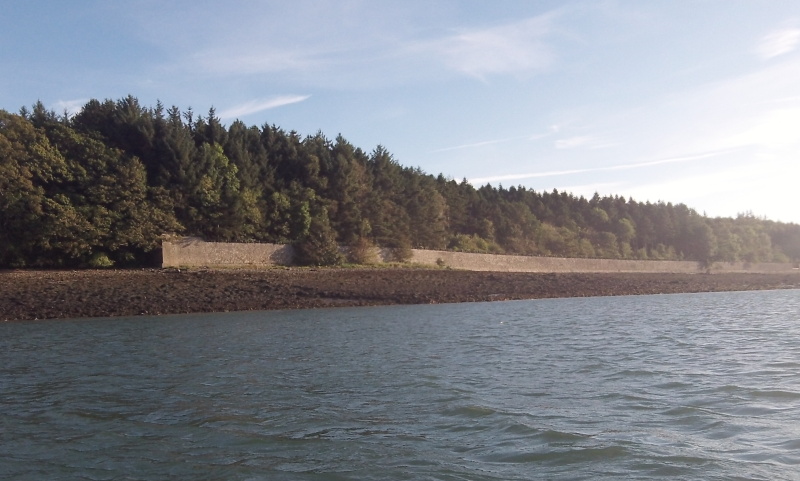
Across on the other side of the Strait, and Nelson stands on a plinth looking out on the all the passing boats.
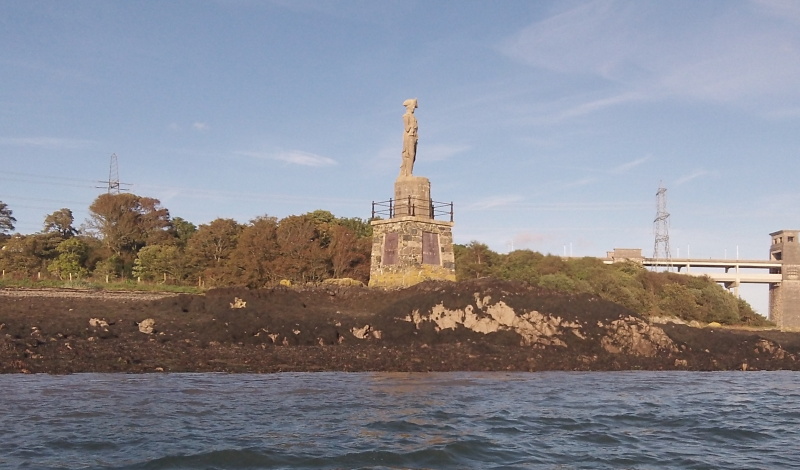
Nelson`s statue was put up by Admiral Lord Clarence Paget, who lived in the nearby house and large estate Plas Llanfair - you can just see it through the trees in the next picture.
Nowadays Plas Llanfair is a military recreational centre, though some parts of it are open to the public - the climbing wall is one of the bits open to the public.
Just right of centre in this next picture, you can also see the Marquess of Anglesey`s Column which dominates the skyline around the village of Llanfair PG - or if you prefer its original name - Llanfairpwllgwyngyllgogerychwyrndrobwllllantysiliogogogoch - and I sincerely hope I`ve got that right !
Also known as Llanfairpwllgwyngyll.
There is an internet domain name "www.llanfairpwllgwyngyllgogerychwyrndrobwllllantysiliogogogoch.co.uk" if you are interested in such things - they claim it is the longest domain name on the internet.
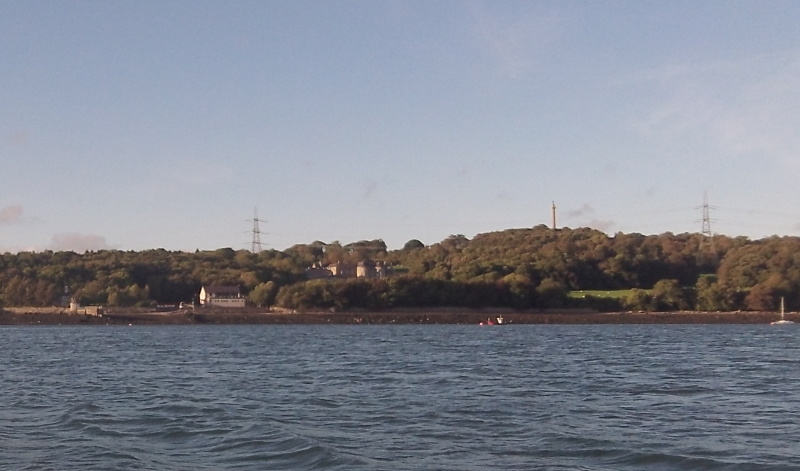
However it was time to head back, and I`m trying to be arty here - not sure if it works or not.
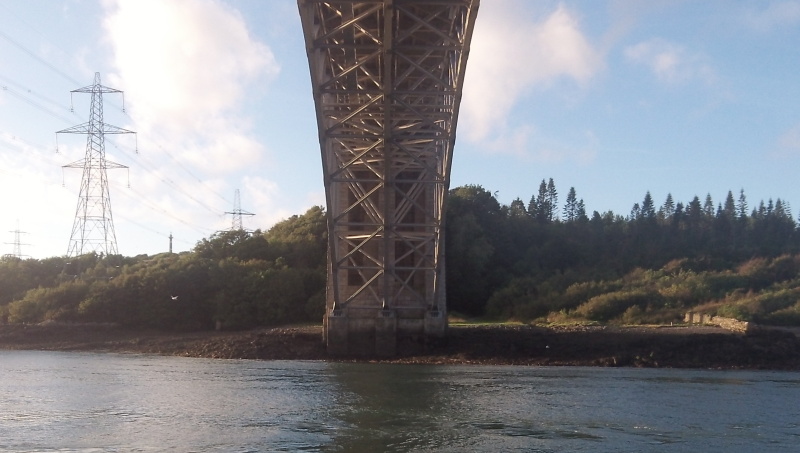
By the time I got back to the Swellies Wave it was already in full flow, so I missed the first 20 - 30 minutes or so.
It was quite chunky, it was quite difficult to get on to it - if I tried to power on from the right, it just pushed me back off again.
Eventually I found that if I paddled right up and out high above the wave, and dropped back down onto the green portion of the wave river right, then I could get some quite good runs on it.
It was a clear night, so the light held up well, and I got 40 minutes or so of play time before it got too dark.
So all in all, it was a good few hours out.
On Sunday, there was a thick layer of cloud and it was somewhat drizzly, so it was obvious that it would get dark quite early.
Of course the tides were some 35 minutes later as well, so it was a bit of a gamble as to whether I would get any playtime.
I was there waiting for the wave to start - waited and waited, as the light was begining to fade.
It`s funny how waves work - as the current builds, there is no wave, and no wave - then suddenly there is a wave. So I jumped on.
I got about 20 - 30 minutes or so before it was too dark.
Being earlier in the cycle, the wave wasn`t just so chunky, in fact every now and then it completely flattened out, and I just dropped of the wave.
Eventually I worked out that if I headed out just when the wave had completely flattened, I would get on just as the wave was building again.
So I got a few good shots, and even managed one paddle twirl - and it was worth the trip.
Over the two days, I found that the ability to edge and carve was a useful tool, however it had to be used judiciously.
I`ve only changed the ends of the boat - the boat still has it`s flat mid section, which is why it surfs so well.
However it means that if I edge too much, the hull shape in contact with the surface of the water changes substantially, and I lose speed.
So a brief edge to help drive the boat round, then back to flat for speed again seems to be the best approach.
But I`ve still got a bit of learning to do on how best to use it.